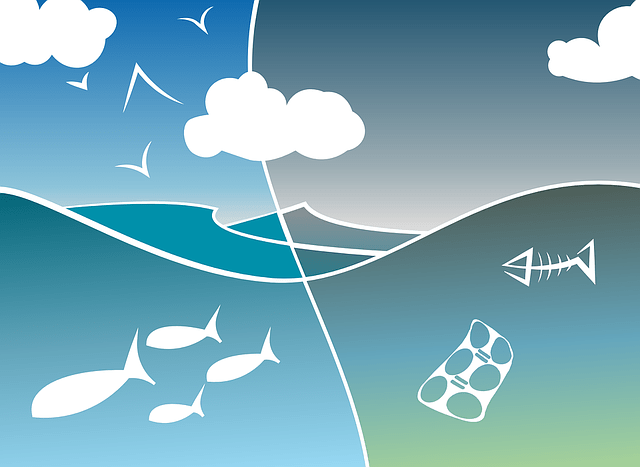November 22 US media:
Plastic waste affects environmental quality and ecosystem health. In 2010, it was estimated that 5 to 13 million tons of plastic waste entering the ocean came from developing countries with inadequate solid waste disposal infrastructure to high-income countries with very high levels of waste generation.
We confirm that in 2016, the United States produced the largest amount of plastic waste in the world (42 million tons). Among them, 140,000 to 410,000 tons of plastic waste were illegally dumped in the United States; 150,000 to 990,000 tons were caused by the mismanagement of the state that imported recycled materials from the United States. All this is included, the total amount of plastic waste in the United States entering the coastal environment in 2016 is estimated to be five times that of 2010, ranking first in the world.
In 2010, high-income countries such as the United States and members of the European Union released large quantities of plastic waste into the ocean. Although these high-income countries have well-developed garbage disposal systems, due to the combination of a large coastal population and a very high per capita waste generation rate, a large amount of improper garbage is generated simply because littering (about 2% of the total amount of garbage) enters the ocean. According to the 2010 data analysis, the total amount of garbage generated by the coastal population in the United States is the largest of all countries (13.8 million tons, 112.9 million people).
In addition, the United States is also the second largest exporter of waste plastics in the world. If imported materials are not properly disposed of in the receiving country, the environmental plastic waste generated by the United States may be higher than previously assessed. Here, we estimate the total amount of plastic waste generated by all the population in the United States in 2016, as well as plastic waste illegally dumped at home, plus the total amount of waste that may be improperly disposed in countries that import recycled materials in the United States. Both of the latter have added land and marine plastic waste.
In 2016, according to World Bank estimates (34 million tons) and our accurate estimate of the United States (42 million tons), the total amount of plastic waste generated by the United States population was the highest in the world, and the per capita plastic waste generation was also the highest in the world (more than 100 kilograms).
The total amount of plastic waste produced collectively in the EU is higher than that of India or China, although the population is only 40% of India or China. In the 28 EU countries, the per capita production rate of plastic waste is close to half of that of the United States.
In the United States, plastic waste is disposed of: landfill (75.4%), incineration (15.3%) and recycling (9.3%). In this way, 100% of the garbage generated in the United States is properly disposed of. Although this calculation method is useful in assessing how to deal with garbage, it does not consider the ultimate fate of littering or illegal dumping or recycling.
The total amount of improperly disposed of plastic waste in the United States in 2016 ranged from 980,000 to 1.26 million tons, or 2.33 percent to 2.99% of the total plastic waste.
In 2016, nearly 50 percent of plastic waste recycled around the world was done through international trade. In 2016, the United States exported 1.99 million tons of waste plastics to 89 trading partners. More than 88% of the countries exported to countries with a rate of improper disposal above 20%.
Our analysis proves that the United States has released a huge amount of plastic waste into the environment, including into the ocean, although it has a well-developed infrastructure to collect, transport and dispose of waste. The vast majority of residents in the United States have garbage collection and recycling channels, but illegal dumping and littering are still widespread, resulting in huge costs for municipal prevention and cleaning. Although the total amount of garbage dumped is only a small percentage of all garbage, it is still large, because the U.S. population produces the largest solid waste in the world.
Although 9.3% of plastic waste in the United States was recycled in 2016, exports driven by global markets, which mainly flowed to lower-income countries, eventually led to large quantities of plastic leakage into the environment.
The United States has the highest rate of plastic waste generation in the world, and the public’s desire to recycle these materials is also very strong. The loss of export markets, coupled with reports of improper disposal of such waste overseas, is increasingly clear that it is necessary to invest in and repair the infrastructure to deal with such waste in the United States. Domestic recycling capacity is increasing, and a number of federal legislation has been proposed to promote and strengthen recycling programs.



